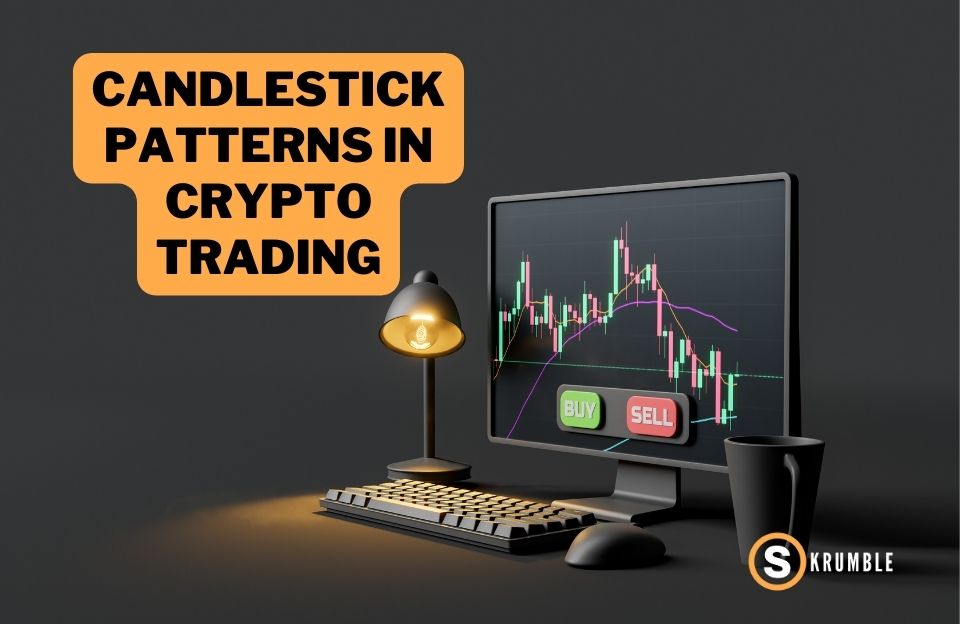- Home
- /
- Guides
- /
- Intermediate
- /
- Developing Effective Risk Management...
Developing Effective Risk Management Strategies for Trading
Swen Keller

Risk management is an often overlooked component of the trading world. Through risk management strategies, traders can mitigate risk and effectively limit losses if the market moves in the opposite direction. It is essential to thoroughly understand the risks involved with trading to implement proper risk management practices against them. Setting up stop-loss orders, having a diversified portfolio, and choosing the right trade size are essential to avoid significant losses.
What is Risk Management?
Risk management is a trading strategy that involves limiting your trading position and placing protective measures in case the market suddenly shifts against your position. it can reduce the financial damage you endure following a string of losses. Its core objective is to mitigate financial harm, particularly during a sequence of losses, while ensuring you retain sufficient capital to engage in profitable trading and facilitate a timely recovery from any incurred losses.
In this blog, we will delve into the concept of risk management and explore the primary risk management techniques. Additionally, we will evaluate the benefits that come with the strategic implementation of effective risk management practices. Moreover, we will candidly discuss the limitations and challenges associated with utilizing risk management, while addressing some of the constraints associated with using risk management as a trading strategy.
Types of Risks
Trading risk is the probability of suffering losses when carrying out trades. You will encounter the same risk in all markets if you are interested in commodities, margin, CFD, or Forex trading. We will discuss the main types of risks that you can face.
Market Risk
Market risk is the most common type of risk that you will encounter while trading. It occurs when the market performs differently from how you predicted it to. For instance, if you anticipated the price of a specific asset to increase and initiated trading accordingly, any subsequent unfavorable price movements can result in substantial losses.
Leverage Risk
Traders will often utilize leverage to open trades much larger than the funds available to them. Leverage trading can be alluring due to its potential for substantial profits, but it also carries an increased risk of losses. Additionally, significant losses may result in margin calls, which occur when a trader is unable to maintain the required account balance. Your leverage broker determines the minimum amount of funds required for leverage trading.
Interest Rate Risk
Traders are always at the risk of unexpected changes in interest rates. Political events and economic events can impact the interest rate in a region. Traders might have to pay more interest than they initially accounted for.
Liquidity Risk
Certain financial instruments possess greater liquidity than others, and when it comes to currency pairs, higher liquidity translates to quicker transaction execution. Lower liquidity means there is less demand for the currency pair or asset. This could mean that the time between the opening and closing of a trade may be more significant. You could have reduced profits or even lose money if the trade can’t be executed at the initial specified price.
Downside Risk
The downside risk is the potential loss that can arise from a drop in an asset’s price due to changing market conditions. Downside risk is a statistical measure used to estimate and quantify the worst-case loss when there is uncertainty about the difference between expected and actual returns.
Exchange Rate Risk
Exchange rate risk refers to the potential change in the exchange rate between different currencies. The global political climate and market sentiment can impact exchange rates. Sudden market moves can lead to drastic drops in the value of particular currencies, and international traders can lose money rapidly.
The 5 Leading Risk Management Strategies
In today’s trading landscape, multiple methods are available to help you limit the losses you might face. Many traders will implement position sizing practices such as the percentage rules and put stop loss orders. Diversified portfolios and calculating risk/reward ratios can also help reduce the loss you sustain.
We will go over the primary practices traders use to manage risk. These risk management techniques are applicable in Forex risk management and other trading approaches, providing you with the necessary tools to navigate various risky situations effectively.
One Percent Rule
The one percent rule is fundamental to risk management, and many traders utilize it. This rule dictates that you only use 1% of your trading capital on a single trade. If you have a trading account balance of $2,000, your position for any asset should not be greater than $200.
Traders must accurately calculate the funds they can allocate to a trade based on the available balance. Some investors with a very high account balance may choose a lower percentage. This is because account size is directly proportional to the size of your position. This rule prevents investors from losing large sums when a trade goes south.
Stop Loss and Take Profit
Stop loss is the predetermined price drop at which a trader will accept loss and exit trades. This occurs when the market goes through price fluctuations that do not match the trader’s predictions. This order is triggered when the market price of an asset drops to or below the value set by the trader.
This risk management strategy helps to reduce market risk in case of an unfavorable reduction in stock price. In contrast, a take profit point is the price at which a trader will exit winning trades to collect their profit. This order is triggered when the market price of an asset increases to the predefined level.
The stop-loss and take-profit risk management strategy enables investors to mitigate future risks and safeguard their earnings. Given the high volatility of the trading market, the shift from a profitable trade to a losing one can be sudden and unpredictable. This strategy helps traders avoid remaining in positions for longer than necessary.
Determining Stop Loss and Take Profit
Stop loss and take profit levels are determined using technical analysis. Traders primarily utilize moving averages and support resistance lines to decide where to place their order points. Among these methods, moving averages are the most commonly used for setting stop-loss and take-profit levels.
They are easy to calculate and are tracked by the entire market. Moving averages are used to determine the trends in stock price by using the average profits and average loss as indicators. The most used moving averages include 5, 20, 100, and 200-day averages.
Another method to determine stop loss and take profit levels is through support and resistance levels. These are lines drawn on price charts that connect the previous highs and lows in the market price of an asset. The lowest price on the chart represents the support level, while the highest price becomes the resistance level. Consequently, the stop loss order is placed above the support level, and the take profit order is below the resistance level.
Risk/Reward Ratio
This trading risk management strategy is crucial to manage risk over extended periods. It is a measure of the expected return on investment against the risks that are associated with it. Maintaining a risk/reward ratio improves the consistency of your trading practices. A lower value in this ratio signifies reduced risk in pursuit of potentially higher returns.
A risk/reward ratio of 1:8 suggests that an investor is willing to risk $1 on the chance that they will be able to gain $8. An ideal risk/reward ratio for trading is 1:3. This value is calculated by dividing the potential trading risk by the rewards you gain.
Portfolio Diversification
Diversifying trading risk is another vital risk management strategy. Portfolio diversification allows you to manage risk without sacrificing expected returns. This trading plan spreads your capital across different asset classes.
As a result of this diversification, you can reduce the damage you sustain from a single losing position. It is essential to select assets that are not extensively correlated. For example, the US and UK stock markets have a significant positive correlation. This causes the market to rise and fall along similar lines. Portfolio diversification doesn’t guarantee that you will make profits or not suffer any loss. However, it can assist you in reducing the overall risk of your trading portfolio.
Hedging
Hedging is another popular risk management tool as it allows you to tackle trading risks by taking a position in the opposite direction to an existing one. The primary purpose of this practice is to offset potential losses in case of adverse market shifts.
Derivatives are the most effective hedging tools against underlying assets, as the relationship between the two is not clearly defined. Derivatives can encompass futures contracts, swaps, and options while underlying assets can include stocks, cryptocurrencies, commodities, bonds, etc. When the original hedged position experiences a price decline, the profits from the hedged position can help offset those losses.
Importance of Risk Management Strategies
Risk management strategies are the cornerstone of successful trading. They are the dividing line between traders who thrive and those who struggle in the unpredictable world of financial markets. Establishing effective risk management strategies is paramount for achieving long-term success, whether you are involved in investing, swing trading, or day trading.
Protecting your Capital
The fundamental objective of risk management is the protection of your capital. Experiencing losses when trading is inevitable due to the uncertainty of the volatile trading environment. Therefore, with proper measures, you can drastically reduce any loss’s impact on your overall trading funds.
Ensuring Longevity in Trading
With the help of risk mitigation practices, you can ensure that a series of losses don’t deplete your account balance quickly. Losing all your money can lead to a premature end of your trading career. Managing risk effectively will give you the staying power to handle the ups and downs of trading.
Logical Decision-Making
Your emotions can get the best of you while trading, especially when a large amount of capital is at stake. Proper management techniques ensure that emotional stress does not negatively impact your trading decisions. It creates a structure based on logical rules to allow you to make the best decisions. A well-defined risk management plan provides psychological comfort, helping you maintain focus and reduce stress when confronted with volatile market conditions.
Adaptation to Changing Market Conditions
The trading market is constantly changing, and this volatility can be challenging for some investors. Robust management methods will allow traders to adapt effectively to the rapidly changing market conditions. Additionally, they will be able to do this without getting exposed to extensive risk.
Compliance with Regulatory Requirements
Some regions also impose regulatory requirements for risk management. Traders can adhere to these regulations to avoid any legal repercussions. This will also allow them to develop relationships with investors and gain their trust.
Cultivating Consistency in Trading Practices
Using risk management strategies cultivates consistency in your trading practices. This coherence is necessary for evaluating the long-term effectiveness of your trading approach. Adequate risk-handling measures encourage traders to reflect on their practices and find improvement areas. It also lets you evaluate the outcomes of your trades, allowing you to learn from the successes and failures.
Risk Tolerance and Appetite
Traders often seek clarity on the distinction between risk tolerance and risk appetite, as both factors define the boundaries of the risks they are willing to take. Risk appetite is the level of risk a trader is willing to face to reach high financial gain. It evaluates the level and kinds of risk you can get exposed to.
For instance, traders with a lower risk appetite may opt for trading more stable assets. This cautious approach is in contrast to experienced traders with a higher risk appetite, who may choose to engage in more high-risk instruments in pursuit of greater profits.
Risk tolerance, on the other hand, measures a trader’s capacity to endure risks without causing significant harm to their trading operations. It reflects a trader’s ability to withstand the challenges posed by market fluctuations.
Traders must accurately assess potential risks based on their specific financial goals. Once these risks are identified, traders can implement robust risk management practices to effectively handle them. With the appropriate risk management measures in place, traders can develop a higher risk tolerance, which means they can navigate adverse situations without facing severe financial repercussions.
Conclusion
A comprehensive understanding of trading risks is paramount before setting out on a trading venture. Equipped with a thorough knowledge of the potential challenges, traders can devise effective strategies to mitigate these risks. Prioritizing risk management not only safeguards trading capital from substantial losses but also extends the lifespan of a trader’s career.
You will face many risks throughout your trading journey and must take the necessary steps to manage them. This entails thoughtful planning regarding the level of risk you are comfortable with and the percentage of your capital you are willing to commit – a fundamental aspect of risk management. A lack of risk management methods can lead to catastrophic losses and reduce overall profits. Risk management is the bedrock upon which every trader’s success is built, safeguarding against pitfalls and ensuring favorable outcomes in every trade.

FAQ
Most frequent questions and answers
The 2% risk rule is a generally accepted principle in day trading. It states that traders should not risk more than 2% of their trading capital on any single trade. This rule is intended to assist traders in managing their risk exposure and capital preservation in the highly volatile and fast-paced day trading environment.
The 2% rule implies that with a $10,000 trading capital, you should not risk more than $200 on a single deal. This ensures that you are protected against significant potential losses and can continue trading even after a few losing trades.
It’s crucial to remember that the 2% rule is only a guideline. Traders can choose different risk levels based on their comfort level, trading style, and personal circumstances. Some traders may be more cautious and risk less than 2%, while others may be ready to risk a somewhat higher percentage. This is especially true for more experienced and aggressive traders.
The “5-3-1” rule in trading is a guideline that outlines how traders should allocate risk and position sizes. According to this rule:
Avoid risking more than 5% of your total trading capital on any single trade.
Limit your exposure to a single industry or asset class to no more than 3% of your trading capital.
Ensure that no more than 1% of your trading capital is at risk on a single position within your portfolio.
Day trading is considered a high-risk practice because of its fast-paced nature, in which markets show volatility and prices can move quickly. This increased unpredictability raises the possibility of significant gains and losses in a short period. Traders must use robust risk management methods to tackle these conditions. This could include placing stop loss orders, evaluating position sizes, and diversifying their portfolio.
Skrumble.com provides all its content for informational purposes only, and this should not be taken as financial advice to buy, trade, or sell any investment instruments or products, including but not limited to cryptocurrencies, or use any specific exchange. Please do not use this website as investment advice, financial advice, or legal advice, and each individual’s needs may vary from that of the author. Investing in financial instruments, including cryptocurrencies, carries a high risk and is not suitable for all investors. It is possible to lose the entire initial investment, so do not invest what you cannot afford to lose. We strongly advise conducting your own research before making any investment decisions. This post includes affiliate links with our partners who may compensate us.
To view our privacy policy read here.






